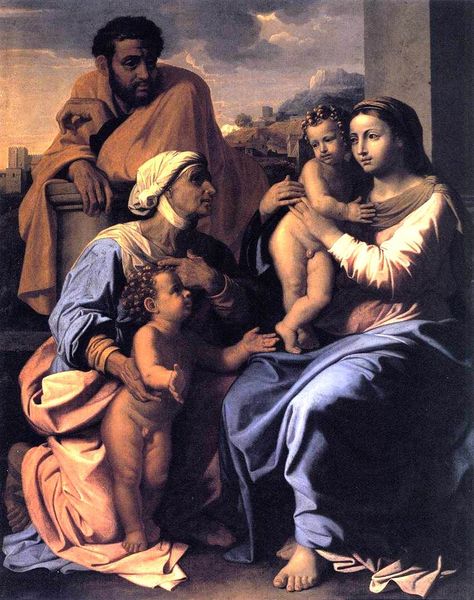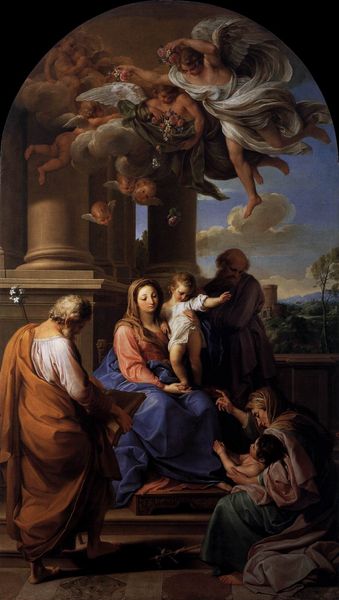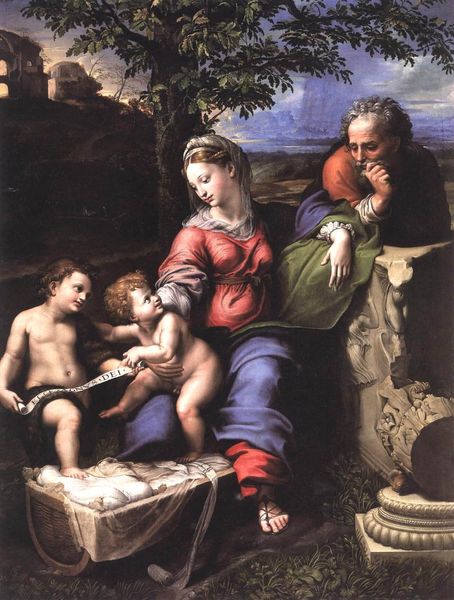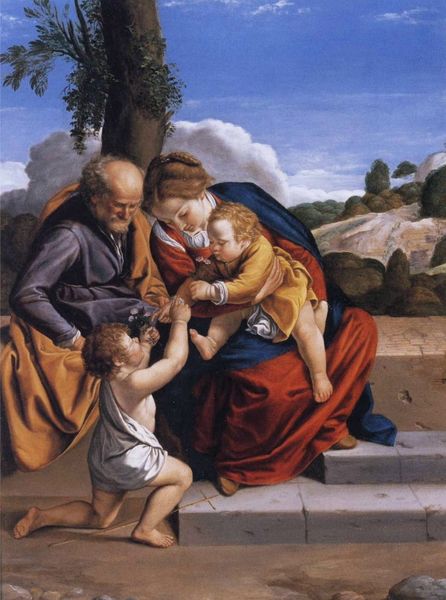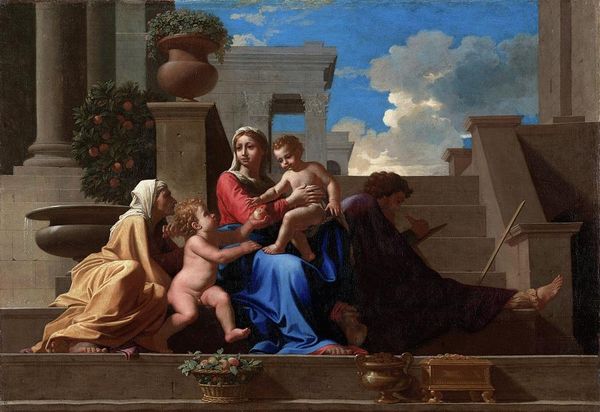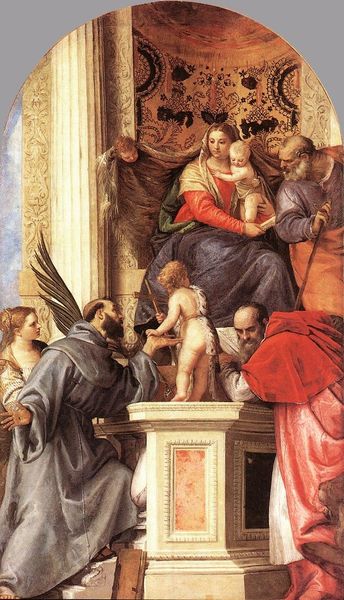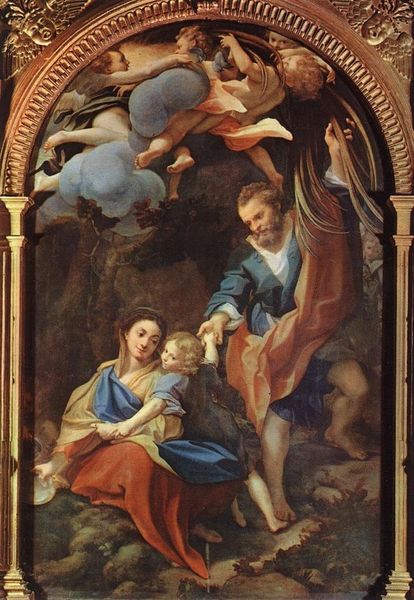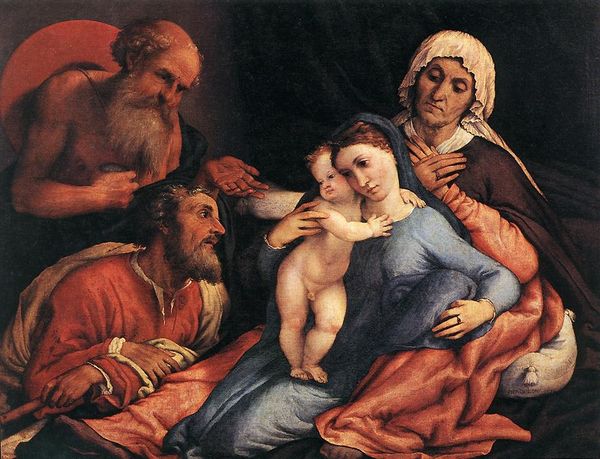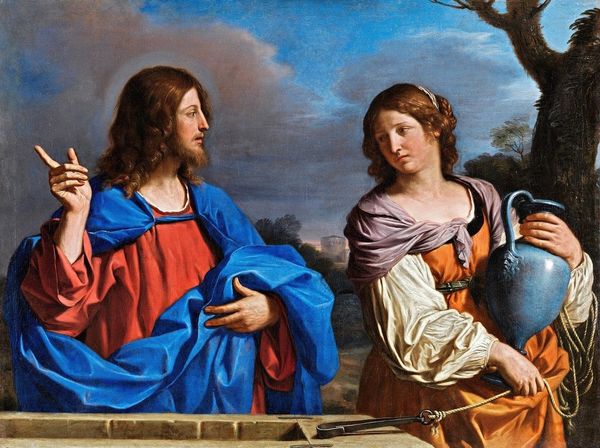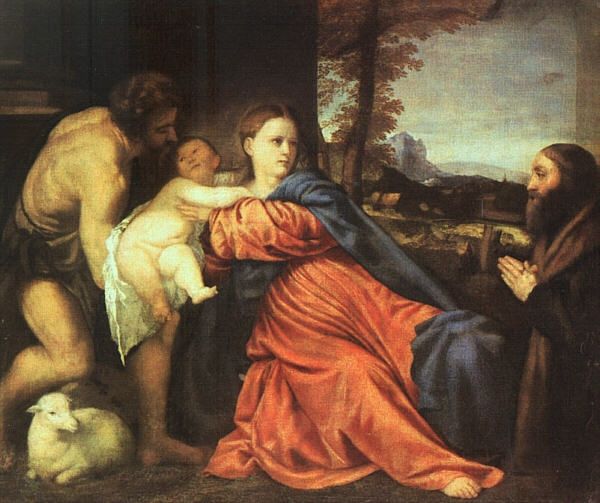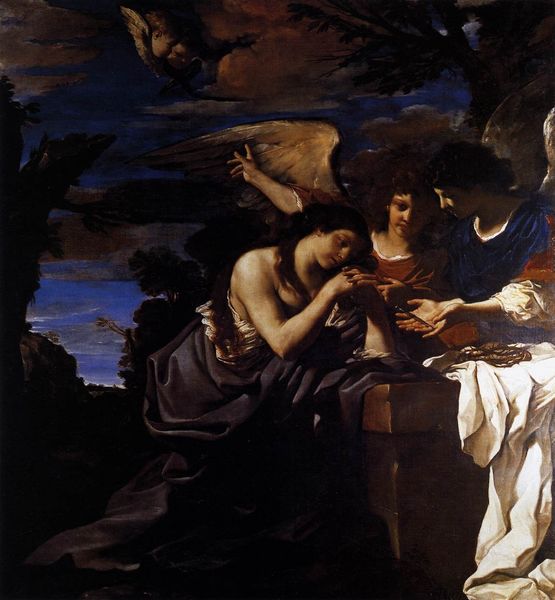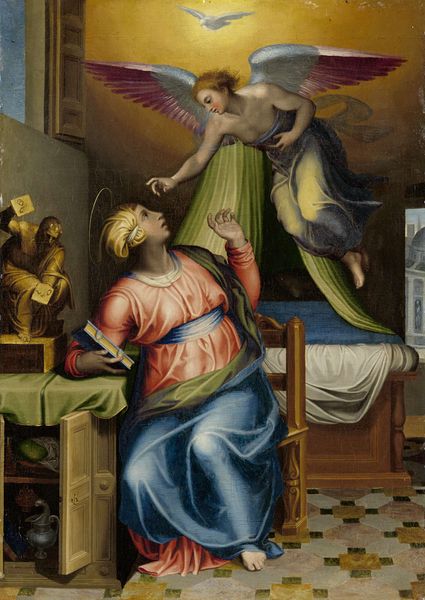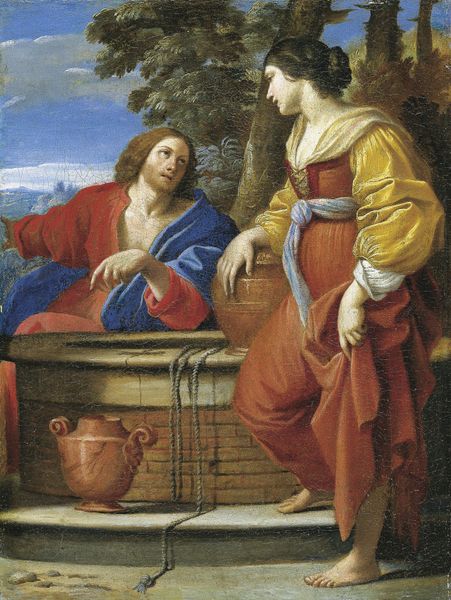
painting, oil-paint
#
portrait
#
narrative-art
#
baroque
#
painting
#
oil-paint
#
figuration
#
oil painting
#
history-painting
#
italian-renaissance
#
portrait art
Copyright: Public domain
Curator: This is "St Luke Displaying a Painting of the Virgin," painted in 1653 by Guercino. A somewhat idealized scene, wouldn’t you agree? Editor: The theatricality is immediately striking. The artist has staged this moment with a very knowing composition, yet the saint's bare feet bring me to the workshop. The materiality is emphasized as well, note how the figure is seated on a wooden stool in an informal setting. Curator: Indeed, there’s a conscious interplay between the real and represented. Look at how Guercino juxtaposes the textures—the coarse fabrics against the smooth skin tones, the rough-hewn easel against the ethereal quality of the Virgin's portrait. It creates a captivating dialogue within the picture plane. The structural integrity relies on the triangulation created by the angel, St. Luke and painting’s focal point, the Virgin and Child. Editor: I'm also interested in the role of labor here. St Luke, as the patron saint of artists, is actively engaged in the process of creation, seemingly observed by an angel overseeing the production of this holy image. What materials were used in making such piece, in that time? The process itself becomes sacred, doesn’t it? Curator: Precisely. The light catches the scene with dramatic flare that draws the eye and speaks to Baroque aesthetics. This focus illuminates the narratives of artmaking and divine inspiration—a common theme in art theory, but so subtly expressed. Editor: Considering this within its socio-historical context enriches our view further. This was an era in the wake of the plague in Italy, and art took new shapes centered on both the every dayness of ordinary lives and on its relation with a more glorious transcendence. What does labor meant in contrast to what lies beyond, the image itself. It would be very revealing to understand where this artist was living and operating back then. Curator: It prompts a wider view of the purpose of sacred art in a world in deep turmoil. Thank you. Editor: My pleasure, considering such elements always offers further readings of what is shown and what is concealed in each artwork.
Comments
No comments
Be the first to comment and join the conversation on the ultimate creative platform.
